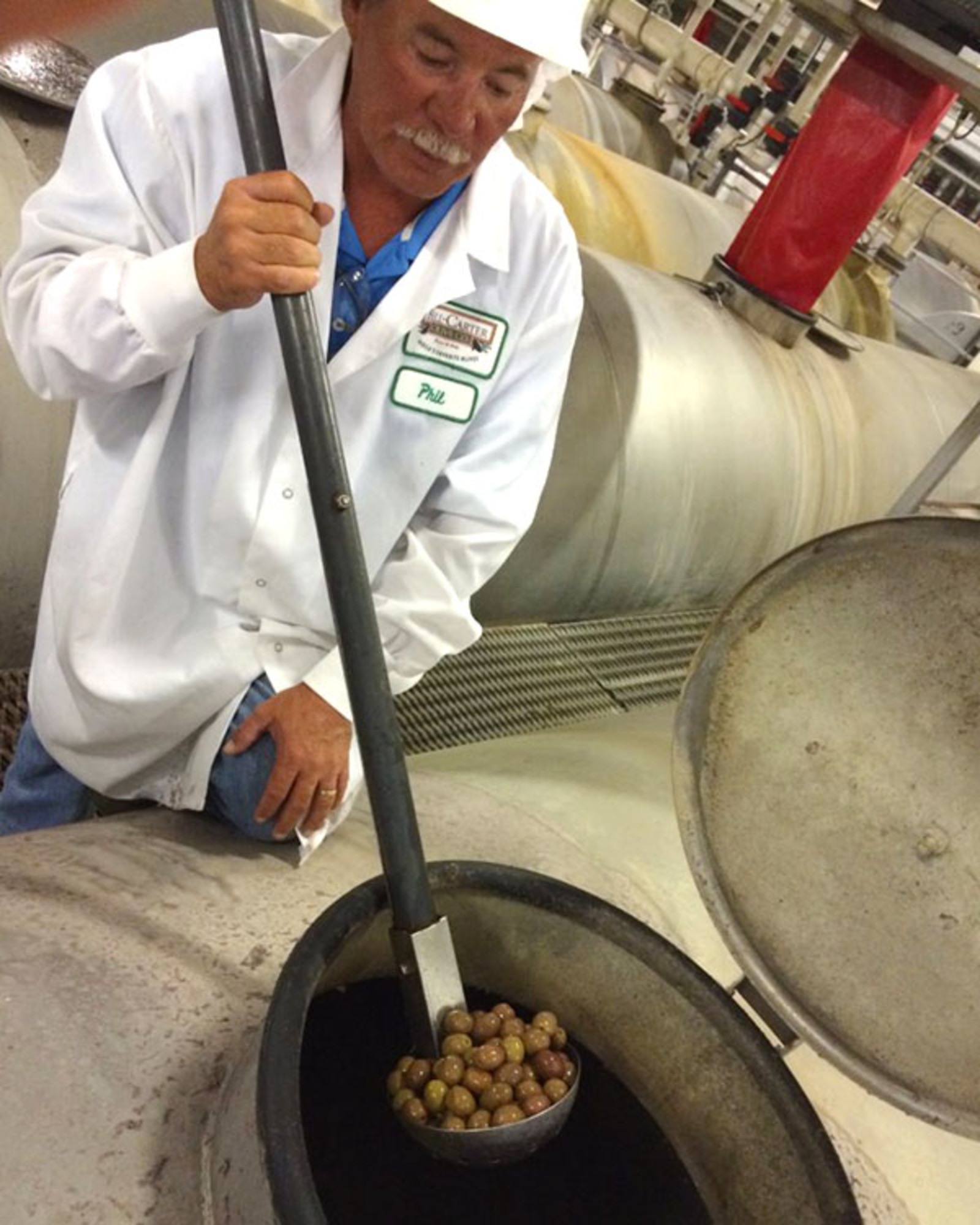Down on the Farm Series: For the Love of Olives

For a deeper understanding of where our food comes from, we're taking you to the farms that supply our pizza toppings. After touring the tomato fields, we decided to get a good night's sleep and gear up for a day in olive country. We set our alarms even earlier this time (though, still not rooster-early) and made the drive north to Corning, California, to see our olives being harvested.
Unlike the tomato harvesting, workers armed with ladders, saddle bags, gloves and bins, pick the olives by hand. A couple of us were treated to fresh Manzanilla olives straight from the tree. After this experience, you can be comfortable in absolutely rejecting this offer if it’s ever extended your way. Raw olives are incredibly bitter, which begs the question: Who had the idea to turn them into something rich, buttery and edible?
Much like the tomatoes, the Bell-Carter packaging plant is minutes away from most of the orchards. While there isn’t a need to get the olive packed right away (they have to be cured to be edible), it greatly reduces shipping distance, minimizing their carbon footprint. This packaging plant is one of two California olive producers. Everyone else closed up shop when stricter environmental regulations came on the books. The Bell-Carter team, unlike its import competitors, hand-picks the olives and uses a longer curing process. The taste and quality are noticeably better.
We were the second customer to start using Bell-Carter’s natural tan olives. These are the same olive as the traditional black olive. The only thing that they lack is a food additive called ferrous gluconate, which locks in the deep black color. Preferring a short list of ingredients, our cans of olives only contain water, salt and the olives themselves.

The Bell-Carter canning facility lacks the hectic nature of the tomato cannery because they are able to can every day throughout the year. Instead of going straight into the facility after being harvested, the olives are set in holding tanks until needed. From there, the olives come into the facility and are inspected, graded and sorted for size. Then it's off to the curing tanks for about seven days. This transforms the bitter green fruit into the savory pizza topping you know and love. After curing they go on to be pitted and canned whole, sliced, slivered or chopped. The facility ships olives all over the country and has a mammoth holding hall that gets depleted of 1,000,000 pounds of olives every day.
We got to taste a variety of olives here and learned that, like our tomatoes, the best ingredients are worth every penny. We also gained appreciation for the folks who rise with the rooster’s crow every morning to harvest crops for our pies.
Check back next week as we head to Oxbow Farm to see the bumper crop of Tuscan kale for our new pizza. That’s right, kale is coming!

